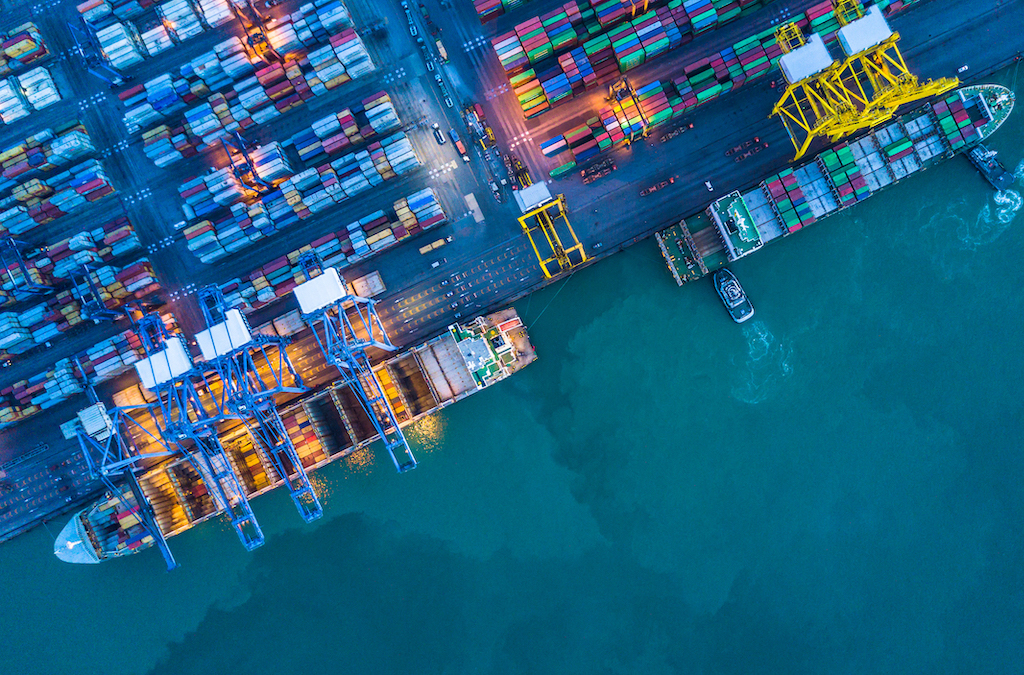Advancing supply chain technology is a must for any logistic organization to stay ahead of the curve. Meanwhile, with the constant change of rules & regulations and increasing customer demands, logistic organizations need to be proactive when it comes to innovation and digitalization. A recent study from Gartner suggested that 23% of supply chain leaders expect to have a digital ecosystem by 2025.1 In this blog, we are looking into the top potential supply chain technologies that will shape the future of logistics.
Warehouse automation as the next frontier
“Warehouse automation is the process of automating the movement of inventory into, within, and out of warehouses to customers with minimal human assistance.”2
E-commerce and consumer demand are thriving more than ever. Therefore, logistic companies are keen on integrating automation and supply chain technology to cut down repetitive, manual tasks and promoting transparency. Subsequently, logistic executives see warehouse automation as a desirable option to replace manual tasks over the next few years. A recent study3 shows that 79% percent of warehouse executives say they are “very likely” and “likely” to invest in warehouse automation over the next three years. Furthermore, the respondents see warehouse automation positively because it will bring changes in the operating environment, such as reduced labor costs, labor shortages, and increased throughput requirements.
Real-time transportation visibility platforms
“Real-time transportation visibility platforms (RTTVPs) provide commercial customers and consumers with real-time insights into their orders and shipments once they have left the brand owner’s, supplier’s or service provider’s warehouse.”4
Today, many advancements allow customers to track their orders and shipments. However, there is still a need for real-time transportation visibility, especially with international freight. For instance, there is a need for airline logistics to capture international transport movement. As part of their compliance priority, airlines must track all transport movements details such as identity, location, and status of any object moving through the supply chain. Having that said, the market of RTTVPs is likely to thrive in the next couple of years.
The use of Artificial Intelligence (AI)
The COVID-19 pandemic accelerates the use of AI to help supply chain organizations become more efficient and faster in holistic decision-making. Indeed, today’s logistic world is complex. It is due to the involvement of several parties in multiple countries, regulations, and government agencies that govern different aspects of the movement of goods and shipments. Some of the main challenges, for instance:
- International trade regulations are constantly changing.
- A vast amount of data is dispersed across the supply chain.
- There is no integrated solution that vets the entire movement of goods and shipments.
Today, many leading supply chain organizations have used AI to analyze the enormous amount of data to understand the current business and predict the future. Furthermore, they will continuously invest in technology with AI integration and advanced analytic tools to address data quality control, connecting disparate silos, and migrating to more automated, resilient supply chain technology.
Read more about the future of logistic in our other blog.
- Future of Supply Chain, Gartner 2021
- https://www.netsuite.com/portal/resource/articles/inventory-management/warehouse-automation.shtml
- https://www.forbes.com/sites/stevebanker/2020/07/31/automation-is-the-future-of-warehousing/
- https://www.gartner.com/reviews/market/real-time-transportation-visibility-platforms






